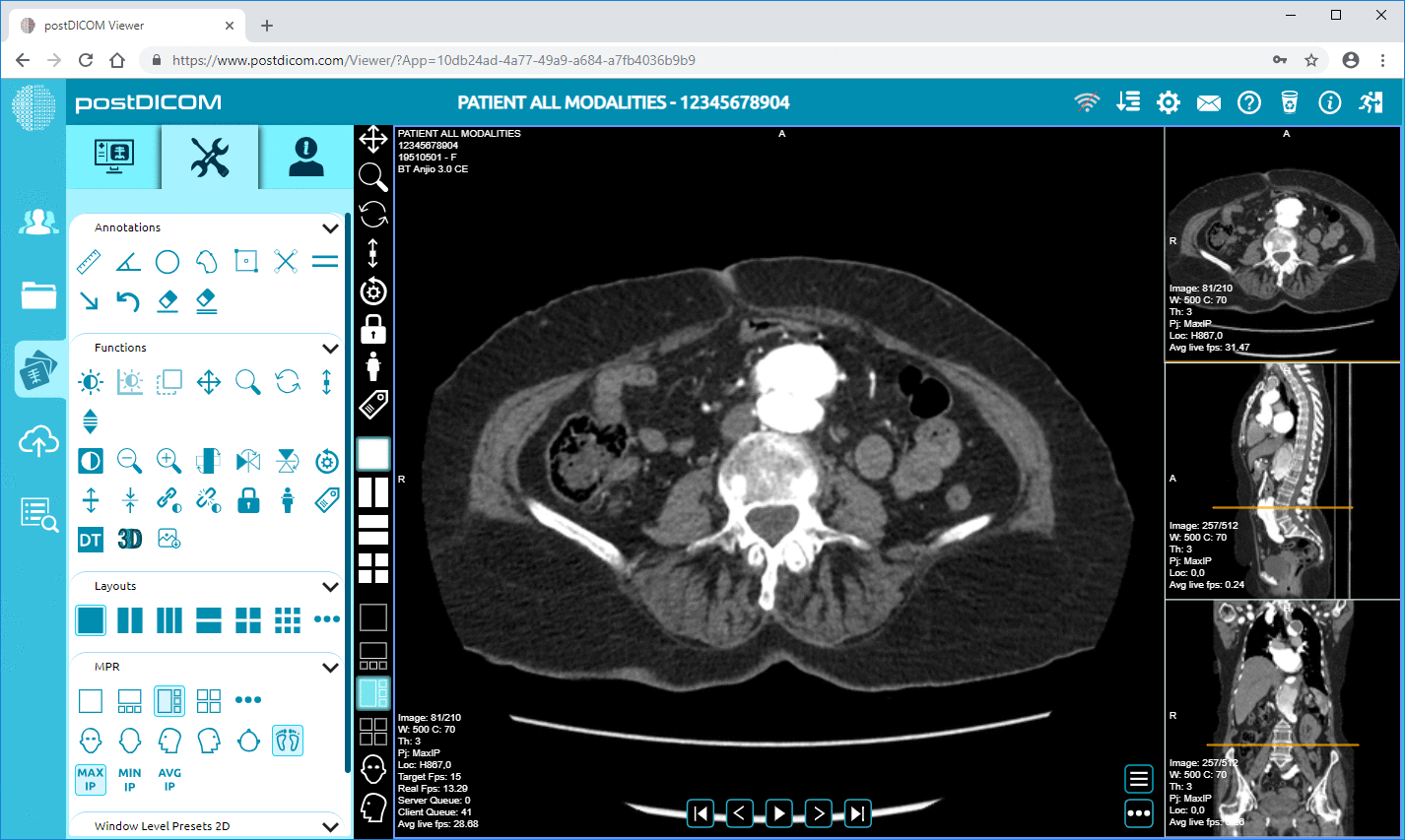
Picture Archiving and Communication Systems (PACS) have become essential for medical imaging management in the rapidly evolving healthcare landscape. They streamline the storage, retrieval, and sharing of diagnostic images, improving workflow efficiency and patient care.
However, while the benefits are clear, the costs associated with PACS are often not as transparent. Healthcare providers must consider not only the initial cost of PACS but also the hidden, ongoing expenses that can significantly impact the total investment.
This blog will provide a breakdown of PACS-related costs, focusing on hidden fees and considerations affecting your financial planning. We'll also explore how modern solutions like PostDICOM help minimize these hidden costs.
The cost of implementing a PACS system can vary widely based on whether it's on-premise or cloud-based. Here’s an overview of what each option entails:
• On-premise Pacs: Includes the purchase of server hardware, storage systems, system integration, and regular maintenance. These costs can be substantial due to the physical infrastructure required and ongoing updates.
• Cloud Pacs: Typically structured as subscription-based models with pricing depending on storage capacity, number of users, and image volume. Cloud solutions often have lower upfront costs as they don't require physical hardware.
Several factors impact the cost of PACS:
• Size Of The Healthcare Organization
• Volume Of Images Processed And Stored
• Customization And Integration Needs
In addition to the initial purchase or subscription, consider the ongoing costs such as:
• Software Updates And Upgrades
• Technical Support And Maintenance
Even with traditional on-premise PACS, the hidden costs can quickly add up:
Maintaining an on-premise PACS requires ongoing system monitoring, troubleshooting, and software patches. You will also need to account for the cost of technical support and vendor agreements, which may incur additional expenses.
As your image data grows, so does the need for additional storage. Backup solutions to ensure data redundancy (especially for compliance with regulations like HIPAA) add another layer of cost. Energy expenses for maintaining physical servers and storage systems should also be factored in.
Significant costs can be incurred in training staff to use the new system and implementing the PACS solution. You'll also need specialized IT staff or external consultants for configuration and integration.
While cloud PACS reduces some upfront expenses, there are still hidden costs to consider:
Cloud-based solutions typically charge a monthly or annual subscription fee. This fee can vary based on factors like storage capacity, the number of users, and the volume of images processed. Billing structures can also differ, with some models being pay-per-use and others offering flat-rate pricing.
Migrating legacy image data into a cloud PACS system often involves hidden costs. Integration with Electronic Health Records (EHR) and other hospital management systems may require extra services.
Large image files require significant bandwidth, especially when accessed remotely. Transferring or sharing DICOM images can incur data transfer fees, which are worth considering if you expect high-volume data usage.
As the amount of image data grows, additional costs may arise for scaling up your cloud PACS solution to accommodate more storage, particularly for high-resolution images or 3D imaging.
Unplanned outages or technical failures can result in lost productivity, delayed diagnoses, and compromised patient care. These disruptions can be costly, especially when immediate access to imaging data is critical.
Switching from a traditional system to PACS can lead to operational slowdowns. Staff may require additional time to adapt to the new system, resulting in a temporary reduction in efficiency.
Integrating PACS with existing medical equipment and software can create unanticipated troubleshooting costs. When sharing data with external healthcare providers or insurance companies, compatibility issues may also arise.
Maintaining HIPAA compliance and ensuring data security involves continuous costs. Encryption, secure access controls, and regular audits all contribute to the ongoing expenses associated with a PACS system.
Healthcare organizations may incur significant legal costs in case of data breaches or non-compliance. These expenses can be minimized by selecting a PACS solution with built-in security features.
Regular audits are required for compliance purposes, and generating reports for regulators or insurers can be time-consuming and costly. Ensure that your PACS solution can support these requirements at an affordable price.
Many healthcare organizations find themselves locked into long-term contracts with their PACS vendor. This can limit flexibility and lead to hidden costs when switching to a new system. Data migration, retraining staff, and integrating new software can all result in unexpected expenses.
When evaluating a PACS solution, looking at both the initial investment and the long-term costs is essential. This includes storage, maintenance, training, security, and compliance. A total cost of ownership (TCO) analysis will help you make an informed decision that balances upfront savings with long-term sustainability.
Weigh the long-term benefits, such as improved efficiency, better patient care, and streamlined workflows, against the hidden and ongoing costs of maintaining your PACS system.
 - Presented by PostDICOM.jpg)
Modern PACS solutions, such as PostDICOM, offer several features that can reduce hidden costs and simplify the process for healthcare providers.
PostDICOM’s cloud-based solution reduces the need for expensive infrastructure investments. It provides scalable storage solutions that grow with your needs, eliminating the need to purchase additional hardware.
With clear, predictable pricing models, PostDICOM helps healthcare organizations avoid unexpected costs. This transparency ensures you know exactly what you’re paying for each month.
PostDICOM’s user-friendly interface reduces the need for extensive training, lowering operational costs and helping staff get up to speed quickly.
PostDICOM includes integrated HIPAA-compliant features, ensuring security without additional legal or audit expenses.
PostDICOM integrates easily with existing EHR systems and medical devices, reducing the costs associated with system compatibility issues.
To make the decision easier, PostDICOM offers flexible pricing plans designed to meet the needs of healthcare organizations of various sizes:
| Features | Basic Package (Lite) | Standard Package (Pro) | Premium Package (Advanced) |
| Price | $79.99/month | $149.99/month | $499.99/month |
| Cloud Storage Space | 100 GB | 500 GB | 2,000 GB |
| Additional User Licenses | - | 1 | 5 |
| Number of Monthly Shares | 100 | 500 | 1,000 |
| Maximum Share Duration | 3 Months | 6 Months | 24 Months |
| Location Licenses | 1 | 1 | 1 |
| Medical Device Communicator | - | 1 | 1 |
| User Upgrade Plans | 1 | 10 | No limit |
| Location Upgrade Plans | - | 2 | No limit |
| Medical Device Communicator Upgrade Plans | - | 2 | No limit |
Understanding the hidden costs of PACS is crucial for healthcare providers to make informed decisions. From maintenance and storage costs to legal compliance and vendor lock-in, the total cost of ownership can quickly escalate.
By choosing PostDICOM, healthcare providers can focus on improving patient care rather than worrying about unexpected expenses. For more information, visit our pricing section.
Ready to take control of your medical imaging costs? Explore PostDICOM’s affordable, scalable, and secure PACS solutions today. Sign up for a free trial and experience the future of medical imaging management!


|
Cloud PACS and Online DICOM ViewerUpload DICOM images and clinical documents to PostDICOM servers. Store, view, collaborate, and share your medical imaging files. |